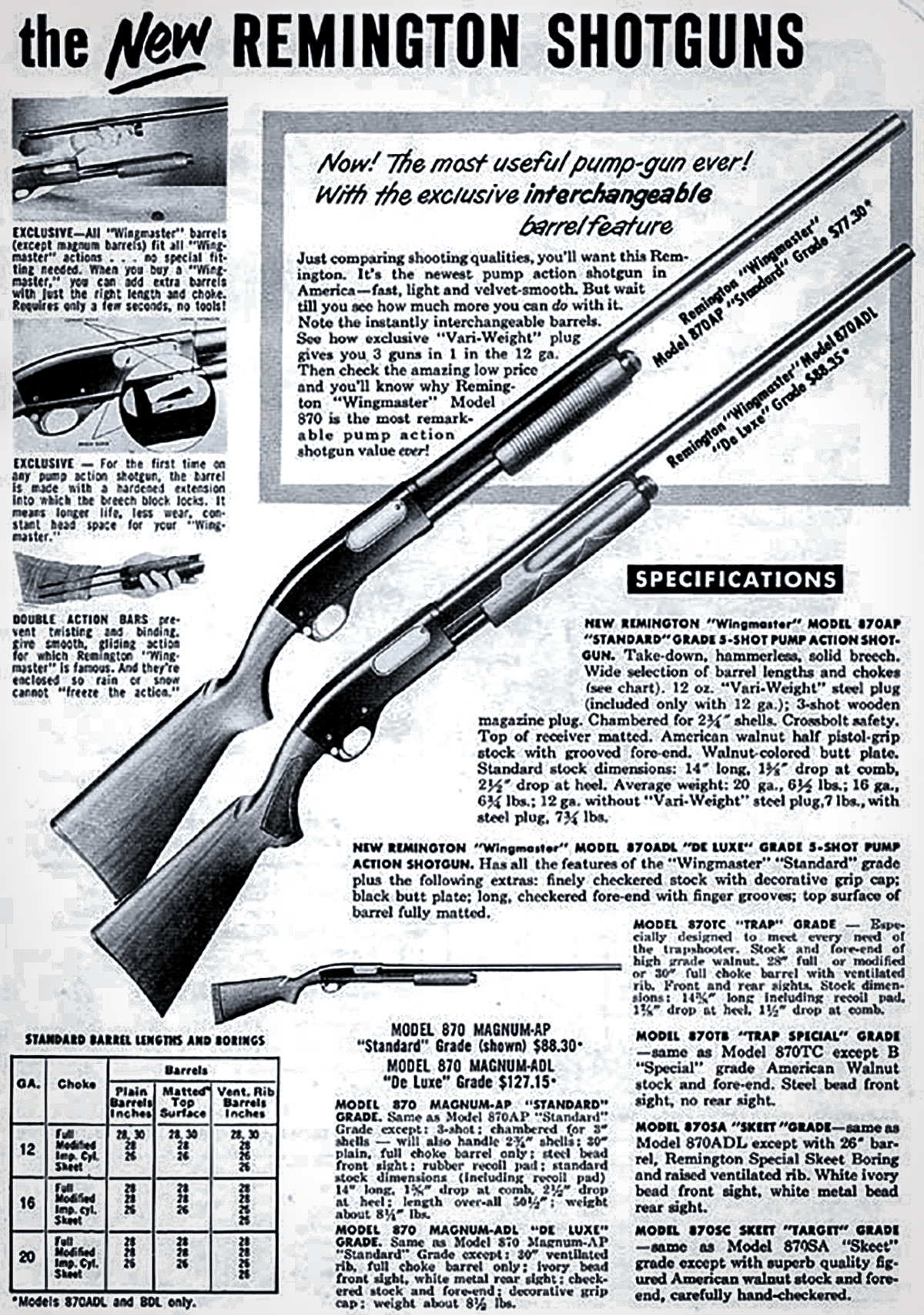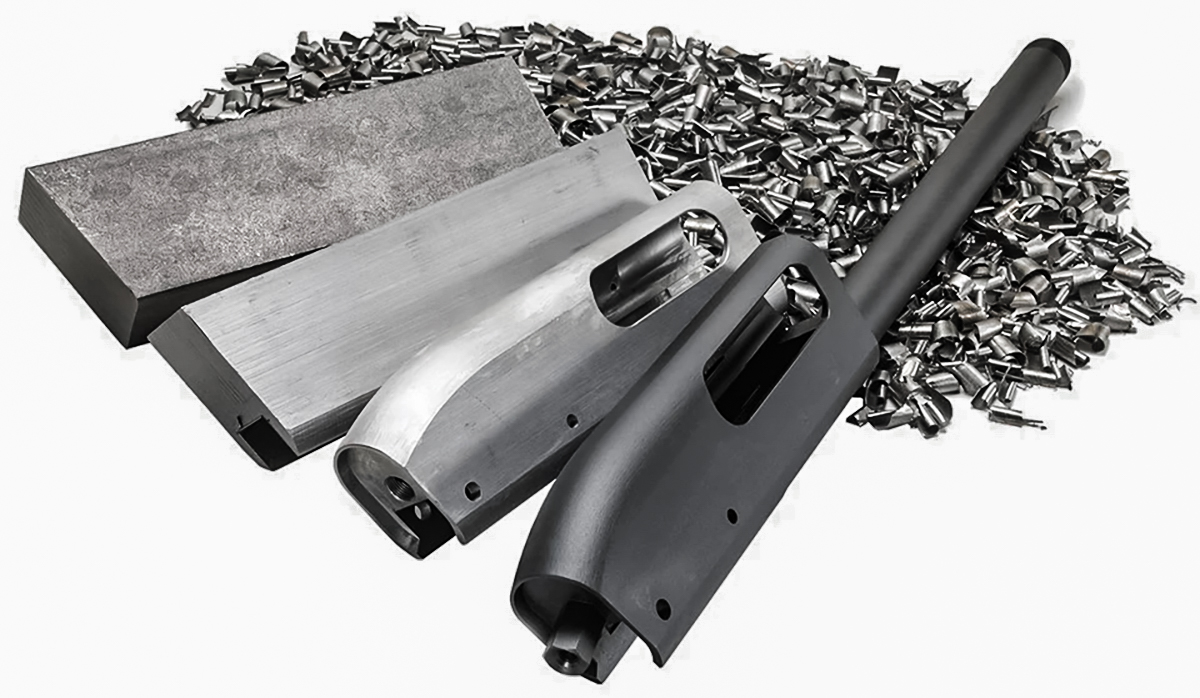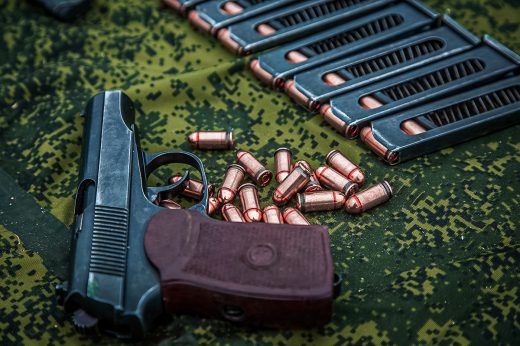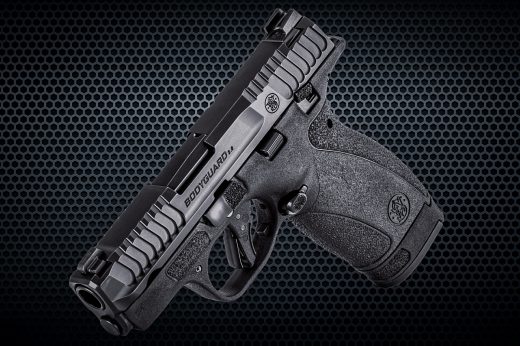My first exposure to the Remington 870 was not at a shooting range or in the woods pursuing wild game. It came when I was 10 years old, sitting on the couch at a buddy’s house watching an R-rated movie I shouldn’t have been. Point Break (1991) starred Keanu Reeves as “Johnny Utah,” an ex-college quarterback turned FBI special agent, and his partner “Angelo Pappas,” (Gary Busey) a surly, disliked, out-of-shape veteran agent.
The two are after a group of Los Angeles surfer/bank robbers led by Bodhi (Patrick Swayze). It wasn’t exactly a deep, complex plotline, but when you’re a kid watching a movie with cussing and guns, there’s not much to complain about.
One of the climactic scenes in the film takes place at a private airport where Utah and Pappas finally catch up to Bodhi and his outlaw gang. There, one of Bondhi’s gang, Roach, shoots Pappas down.
I still remember that scene, but I recall even more vividly someone’s dad walking into the room as Pappas took a round of buckshot. He had a mouthful of turkey sandwich, which barely allowed him to say, “That looks like a Remington 870.” And he was right. It was a pistol grip, a short-barreled variant of the legendary pump-action repeater.
The Remington 870 was featured in hundreds of Hollywood movies before and after “Point Break.” But the guns can be found in the safes of far more American shooters and outdoorsmen. Police forces and militaries also employ the home defense and many tactical versions of the 870.

There have been more than 11 million Remington 870s sold in the U.S. since its debut in 1950. The Remington factory in Ilion, New York, still produces the 870, making it the most successful pump-action shotgun of all time.
There are multiple 870 variants, from that pistol grip slide-action Roach killed Pappas with to the more well-known Wingmaster, a walnut-and-steel hunting model with Fluer di les checkering on the stock and pistol grip. Made in every legal gauge but 10, the Remington 870 continues to be a popular American-made shotgun whether you’re using it for hunting, clay shooting, or personal defense.

RELATED – Click-Clack! The Best Shotgun Ammo for Home Defense
The First Remington 870
In the late 1940s, Remington’s 31 was considered one of the best pump shotguns ever built. It was every bit the rival of the Winchester Model 12. It was a smooth-running repeater but also expensive to produce.
There were over 500 different machine operations required to build the 31. With the labor needed to produce the pump, its price point continued an upward trend to a point where many sportsmen could not justify buying it.
To compete with Winchester and other gun manufacturers, Remington tasked its engineers with designing a cheaper pump that had similar reliability to the 31.
The result was the 870 Wingmaster, made available in a basic AP model that sold for about $15 less than the Model 12, and a Deluxe that included checkered grips and weights that allowed you to make the gun heavier.
Remington built the 870 on the same 16-gauge frame as its 11-48 to save money. That made the gun slightly lighter than other 12 gauges. It was also offered in 16- and 20-gauge when it debuted.

Remington added twin action bars to the 870, so there was less chance of them bending or twisting, which was problematic with some pumps that used a single action bar. The barrel could also be removed by unscrewing the fore-end cap. That allowed shooters to interchange fixed-choke barrels.
Trigger groups were easily dropped out by removing two pins that slid through the receiver to hold it in place. The 870’s design ultimately made Remington’s new pump more user-friendly at a price point many could afford. In fact, by 1973, Remington had sold 2 million 870s, 10 times the number of Model 31s.
Since its inception, the 870 has excelled in every hunting, shooting, and defense application it has been used for. The trap variant of this gun quickly became a staple at ranges across the country.
Duck hunters flocked to the 870—particularly when a 12-gauge 3-inch magnum joined the lineup in 1955—because of its toughness and reliability. Police and military love the 870 for those same reasons.
In time, Remington delivered the 870 in almost every model you can conjure, from the Super Slug deer guns with rifled barrels to the Special Field, a straight-gripped version with a 21- or 23-inch barrel. There were also countless specialized Ducks Unlimited dinner guns, so beautiful that you would never conceive of firing a single shotshell through one.

RELATED – Why the Pump Action Shotgun Still Reigns Supreme
Remington Delivers a More Affordable 870
In 1987, Remington introduced the 870 Express, a budget version of the Wingmaster. Instead of walnut, the Express sported a hardwood stock and fore-end.
The interior and exterior of the Express wasn’t as polished, but beyond that, the pump was exactly the same as a Wingmaster, just cheaper.
Once the synthetic version of this gun came out, it quickly found its way into the hands of public-land bird hunters and into the pickup trucks of countless ranchers and farmers. For the most part, it was an indestructible firearm, and if you did manage to break it, the cost to fix the Express was minimal.
Due to their reliability and low cost (less than $400), many new shooters got their start with a 20-gauge Express. And when you couple the longevity of these guns with the price, it’s hard to find more value in a pump shotgun for a young shooter.

Be advised if you buy a used 870, some models in the early 2000s (the Express in particular) had cycling issues, mostly because the metal inside the receiver was not polished properly. Small burs could be found inside the action.
I recall several of my duck hunting buddies taking a piece of steel wool to the chamber of their 870s to smooth the metal surface so shotshells cycled properly. But outside of those few years when production quality suffered, the Express was a fine price-point pump.
There are still a few “new” models on gun store shelves, but Remington discontinued the Express in 2021 in favor of the FieldMaster. More on that later.
The Tactical Side of Remingrton’s 870
There are not as many versions of the Remington 870 tactical shotgun as the Wingmaster or Express, but I’d venture to bet you’ll find one to your liking. In fact, just before COVID-19 hit in 2019, I recall talking to a product manager at Remington, and he said that out of 30 to 35 current production 870s, at least a quarter of them (at the time) were tactical or home defense models.

U.S. Special Forces have used the military variant of this gun—the M870 MCS—in Iraq and other conflicts. The M870 is more modular than the civilian guns. It has a smaller fore-end that molds to your hand and two Picatinny rails—one that mounts to the top of the receiver and another that mounts between the barrel and magazine tube towards the shotgun’s muzzle for mounting a light.
Barrels come in three lengths—10, 14, and 18 inches—plus the stock can be removed and replaced with just a pistol grip for use in tight quarters.
All of the home defense 870s have more capacity than the Wingmaster or Express, thanks to an extended magazine tube that allows the shooter to load seven shells total. They also have shorter barrels, typically around 18 1/2 inches, though there are exceptions.
Outside of that, the home defense variants are just like the sporting models. Some even have wood stocks and fore-ends.

Remington 870 tactical models have black synthetic stocks and fore-ends, a receiver-mounted Picatinny rail, 18½- to 20-inch barrels, extended magazines, and an extended, ported choke that looks like a muzzle brake but isn’t. The DM Magpul is one of the most unique 870 tactical shotguns. DM stands for “detachable magazine,” which can hold six shotshells.
The magazine tube has a three-round capacity, and once you drop that final shell in the chamber, you’re loaded up with 10 rounds. A long, boxy fore-end gives the shooter more control of the 870 and makes it easier to rack the next load.
RELATED – The 12 Gauge Shotgun: Do You Really Need Anything Else?
Remington’s Newest 870: The Fieldmaster
In July 2020, Remington filed for bankruptcy and was sold off in pieces two months later. The Roundhill Group, which operates as RemArms, bought the gun side of the business (with the exception of Marlin). From the inventory left by the previous owners, they produced a run of 870 Express models in 12-gauge. But once those supplies ran out, they dropped the Express from the lineup and introduced the FieldMaster.

Tired of competing with the Mossberg 500 (that’s what the Express was for), Remington upgraded to a walnut stock and fore-end and put a rust-resistant finish on all metal parts of the FieldMaster.
The receiver is drilled and tapped, a game-changer for turkey hunters who want to mount an optic on an 870. Owners of the Express and Wingmaster had to use a crude hood that mounted by removing the pins that held the trigger group in place or having a gunsmith drill holes in the receiver.
The FieldMaster also features a turn-key magazine plug, smoother finishes on the twin action bars and chamber, swivel studs, and three screw-in chokes (the Express came with only a Modified choke).

I torture-tested the FieldMaster in the summer of 2022, running hundreds of rounds through it, throwing dirt clods in the action to see if it would cycle properly, and finally submerging it in a farm pond. It shot the first three rounds I loaded but failed after that.
However, I only needed to perform a quick field strip, wipe down all the parts, and reassemble the 870 to get it to function again. If RemArms can continue that standard, the FieldMaster should have a long stay in the gun closets of American shooters.
Meta Description: The Remington 870 has been in production for more than 70 years and shows no signs of slowing down.
READ NEXT – Bullpup Shotguns: The Good, the Bad, and the Ugly










Comments